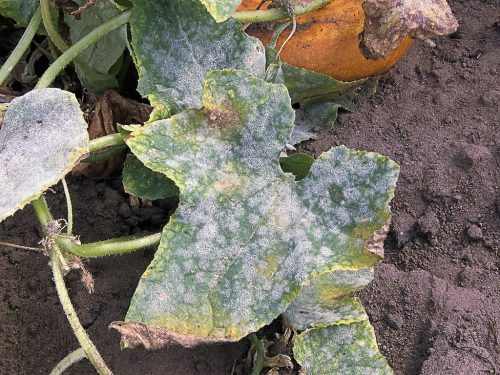Powdery mildew, one of the different species of Ascomycete fungi which affects a wide range of plants.
Do not confuse with:
Downy mildew

Powdery mildew – one of the different species of the sac fungi (Ascomycete strain) which affects a wide range of plants. Causes powdery spots, which later cover the entire plant.
Ascomycota phylum causes powdery mildew on apple trees.
A variant is sunflower mildew (Sphaerotheca fusca) that can affect cucumber, zucchini and endive in dry summers with temperatures above 20°C.
The variant (Sphaerotheca pannosa) affects roses. For the “powdery mildew” on oaks, the fungus Mycrosphaera alphitoides is responsible, also belonging to Ascomycetes strain.
Other members of the Ascomycetes strain cause powdery mildew on maple trees.
Powdery mildew mainly grows at temperatures between 20 ℃ and 30 ℃ with moist air, such as dew.
The orange ladybird (Halyzia sedecimguttata) feeds on powdery mildew. This ladybird is common in Europe. They are found on ash and maple trees in forests.
Fungi of the group Erysiphales – an order also belonging to the sac fungi (ascomycetes) – causes a form of powdery mildew on carrots and wheat. The fungus Erysiphe polygoni causes powdery mildew in beets.
The fungus Leveillula is also one of the species of the sac fungi (Ascomycete strain) which affects a wide range of plants.
The powdery mildew fungus Podo
Both Downy mildew and Powdery mildew primarily affect the leaves. Downy mildew – belonging to the Peronosporaceae family – can be recognized by the fungal layer on the underside of the leaf and the associated leaf spots on the top of the leaf. Powdery mildew, on the other hand, causes white, powdery fungus growth in the absence of any leaf spotting.
Where to find
- Vegetable plot
- Ornamental garden
Control
Cut away affected plant parts.
Prevention
Prevent by sowing mildew-resistant varieties. Make sure there is sufficient air circulation between the plants and give enough water when it is dry.
